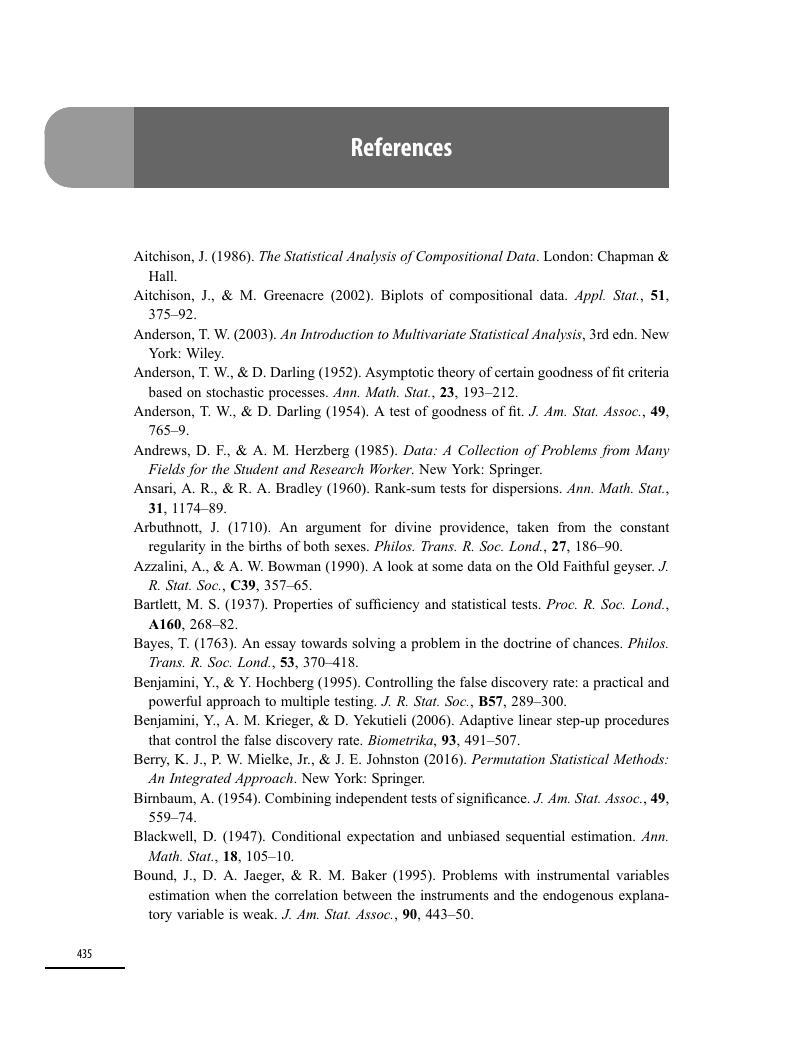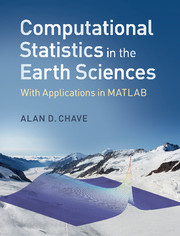Book contents
- Computational Statistics in the Earth Sciences
- Computational Statistics in the Earth Sciences
- Copyright page
- Contents
- Preface
- 1 Probability Concepts
- 2 Statistical Concepts
- 3 Statistical Distributions
- 4 Characterization of Data
- 5 Point, Interval, and Ratio Estimators
- 6 Hypothesis Testing
- 7 Nonparametric Methods
- 8 Resampling Methods
- 9 Linear Regression
- 10 Multivariate Statistics
- 11 Compositional Data
- References
- Index
- References
References
Published online by Cambridge University Press: 06 October 2017
- Computational Statistics in the Earth Sciences
- Computational Statistics in the Earth Sciences
- Copyright page
- Contents
- Preface
- 1 Probability Concepts
- 2 Statistical Concepts
- 3 Statistical Distributions
- 4 Characterization of Data
- 5 Point, Interval, and Ratio Estimators
- 6 Hypothesis Testing
- 7 Nonparametric Methods
- 8 Resampling Methods
- 9 Linear Regression
- 10 Multivariate Statistics
- 11 Compositional Data
- References
- Index
- References
Summary

- Type
- Chapter
- Information
- Computational Statistics in the Earth SciencesWith Applications in MATLAB, pp. 391 - 434Publisher: Cambridge University PressPrint publication year: 2017



